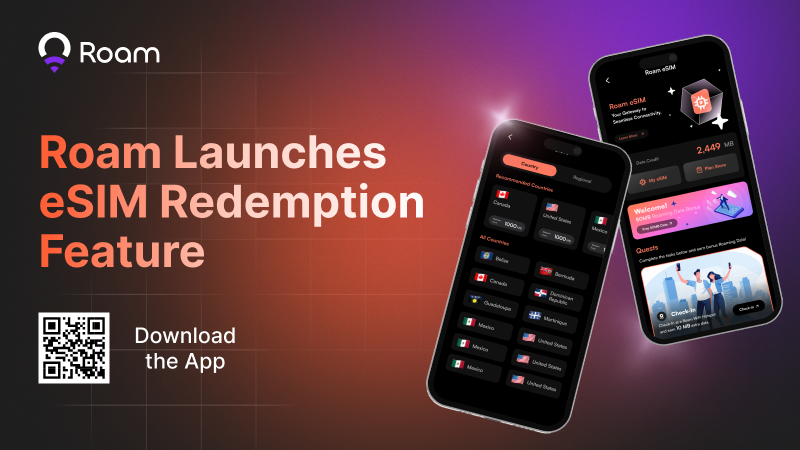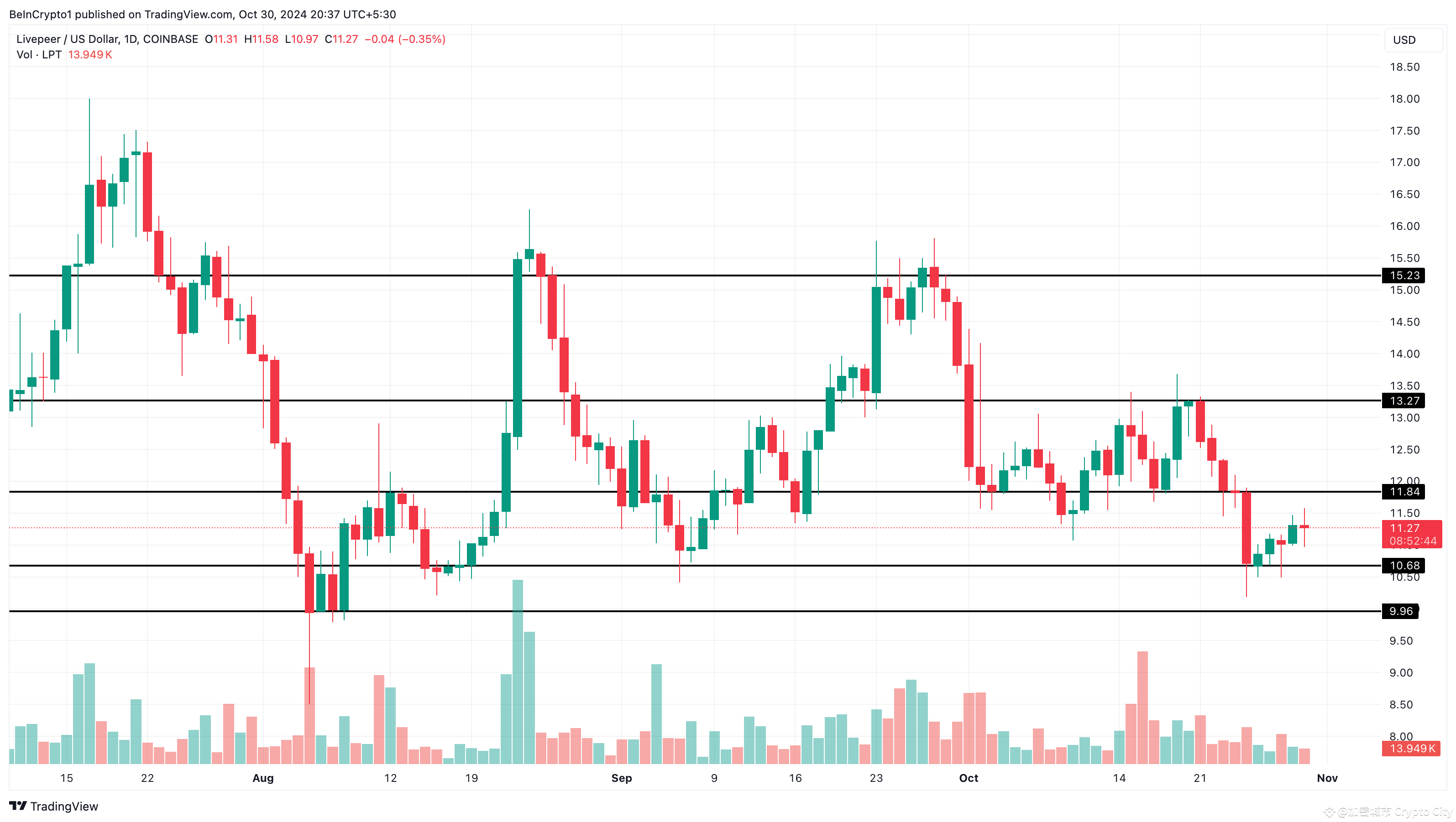Latest DePIN News

a year ago
Chirp's Innovative Approach to Decentralized Physical Infrastructure Networks
Decentralized Physical Infrastructure Networks (DePIN) are poised to revolutionize the Web3 landscape by creating a bridge between traditional physical assets and decentralized systems. By distributing the ownership and maintenance of infrastructure among community members, DePIN offers unique investment opportunities and practical applications for both enthusiasts and the general public. However, the success of DePIN relies heavily on achieving a balance between supply and demand, where an oversupply of infrastructure without corresponding demand can lead to diminished participant rewards and weakened token value.
Chirp's approach to DePIN stands out due to its focus on quality over quantity. Rather than rapidly deploying numerous miners, Chirp strategically manages network growth to ensure sustainability. For instance, in Berlin, the network is effectively covered with just nine Blackbird devices, preventing market saturation and ensuring that community members, known as Keepers, receive attractive rewards. This method not only maintains high rewards for participants but also supports a healthy ecosystem, avoiding the pitfalls of over-saturation that can plague other DePIN projects.
Chirp's vision extends beyond mere infrastructure; it aims to solve pressing IoT challenges by integrating blockchain technology with a wide range of devices. By addressing issues like vendor lock-in and fragmentation, Chirp facilitates seamless management of IoT devices across various sectors, including logistics, healthcare, and smart cities. The platform's ability to connect diverse devices and enable trusted data sharing through blockchain enhances operational efficiency and reliability. As Chirp continues to lead in the DePIN space, it exemplifies the importance of a sustainable, demand-driven approach for the future of decentralized IoT networks.

a year ago
Roam Launches Innovative eSIM Redemption Feature for Global Travelers
In September 2024, Roam unveiled its highly anticipated eSIM feature within the Roam App, following two months of beta testing and development. The eSIM Redemption feature officially launched on October 28, allowing users to redeem free eSIM data for global plans in over 130 countries. This innovative solution caters to the growing demand for reliable internet access while traveling, enabling users to bypass the hassle of local SIM purchases and avoid costly roaming charges.
The eSIM feature is integral to Roam's mission of providing innovative connectivity solutions for global users. With flexible and cost-effective options, Roam eSIM ensures high-speed and seamless connectivity wherever users go. The eSIM can be easily purchased and activated directly within the Roam App or by scanning a QR code. The latest update, Version 1.8.0, introduces the eSIM Redemption function, allowing users to accumulate free eSIM data through participation in Roam App activities, such as Check-Ins and in-app events, enhancing their overall experience.
Roam eSIM is designed for simplicity and user-friendliness, enabling users to buy, redeem, and activate their eSIM in just a few minutes. All app users receive a 50 MB welcome bonus of free eSIM data, with additional data earned through daily Check-Ins at Roam WiFi hotspots, rewarding users with 5 MB per Check-In, capped at 5 GB per account. Once enough data is collected, users can redeem it instantly via the Roam App. To access this feature, users must update the app, while newcomers can download it from the App Store or Google Play Store, ensuring seamless travel connectivity with Roam's innovative eSIM Redemption feature.

a year ago
CUDOS Intercloud: Pioneering the Future of Decentralized Infrastructure with DePIN
DePIN, or Decentralized Physical Infrastructure Networks, is emerging as a transformative model that shifts away from traditional centralized infrastructure systems. Unlike conventional models dominated by a single provider, DePIN leverages a distributed network of participants to provide and maintain essential physical infrastructure, including computing power, storage, and connectivity. This decentralization not only enhances resilience by reducing reliance on a single point of failure but also optimizes resource usage, leading to significant cost and energy efficiencies. Participants in DePIN networks contribute resources and are compensated, fostering a collaborative environment that benefits all stakeholders involved.
The significance of DePIN lies in its ability to address critical challenges faced by digital infrastructure. By enabling services such as AI inference to run closer to data sources, DePIN reduces latency, which is vital for real-time applications. Furthermore, the distributed nature of these networks enhances resilience, making them less vulnerable to outages. Cost efficiency is achieved through a diverse set of providers, eliminating the need for expensive centralized infrastructure. Additionally, DePIN's architecture promotes environmental sustainability by optimizing energy consumption, thereby lowering the overall carbon footprint associated with large data centers.
CUDOS Intercloud plays a pivotal role in the DePIN ecosystem by providing a decentralized cloud computing platform that connects service providers globally. This integration allows for lower latency in computing and AI inference, as workloads can be processed closer to their data sources. By tapping into underutilized resources, CUDOS Intercloud not only reduces operational costs but also enhances energy efficiency. Its resilient architecture ensures that workloads can be dynamically shifted in case of failures, improving uptime and reliability. As the demand for decentralized infrastructure continues to grow, CUDOS Intercloud is well-positioned to lead the charge in revolutionizing cloud services, storage, and AI processing within the DePIN framework.

a year ago
MapMetrics App Update: Enhancements for Android and iOS Users
The latest update to the MapMetrics app introduces a range of exciting new features and essential fixes aimed at enhancing user experience on both Android and iOS platforms. This update reflects the commitment of the developers to continuously improve the app's functionality, security, and usability. Key enhancements include real-time traffic displays for iOS users, improved earning notifications, and a more streamlined invite friend flow for Android users. These updates are designed to provide users with accurate navigation, reliable notifications, and a seamless interface for managing their earnings and exploring maps.
For Android users, the update brings several notable improvements. The earning notification system has been fixed, allowing users to receive real-time updates about their rewards and activities within the app. Additionally, the wallet section has been redesigned for a more intuitive experience, enabling users to easily view balances and recent transactions. The new invite friend flow simplifies the process of sharing the app, encouraging users to expand the MapMetrics community and allowing friends to benefit from its features.
iOS users will also enjoy significant enhancements, including a redesigned wallet that organizes earnings and transactions for easy access. A highly anticipated feature, live traffic displays, is now available, providing real-time traffic conditions directly on the map. Other improvements include a crash fix for user profiles, an upgraded search function for faster results, and enhanced camera functionality. The app is also working towards full landscape mode support, which will enhance usability for users who prefer a wider screen. Overall, these updates aim to deliver a high-quality navigation experience and address user feedback effectively.

a year ago
Bitcoin ETFs Surpass 1 Million BTC Amid Industry Developments
This week, significant developments in the cryptocurrency space have captured investor attention, particularly the milestone of Bitcoin ETFs in the US surpassing 1 million BTC. This achievement signifies a growing acceptance of Bitcoin as a mainstream financial asset, with current holdings exceeding 1.18 million BTC, representing over 5.6% of the total supply. Notably, BlackRock's iShares Bitcoin Trust alone holds over 420,000 BTC. The surge in ETF holdings is seen as a positive indicator for Bitcoin's future, with analysts suggesting that a supply shock may be imminent as institutional interest continues to rise.
In addition to the ETF news, major Q3 earnings reports from companies like Tether, MicroStrategy, and Robinhood have also drawn attention. Tether reported record profits exceeding $2.5 billion, while MicroStrategy announced a substantial capital-raising initiative to acquire more Bitcoin over the next three years. Robinhood's trading volume surged by 114% year-over-year, reflecting the heightened investor enthusiasm for cryptocurrencies. These developments not only highlight the financial health of these companies but also underscore the growing integration of cryptocurrency within traditional financial markets.
However, the week was not without controversy, as allegations of insider trading surfaced against YouTube star MrBeast, claiming he profited significantly from undisclosed transactions. Meanwhile, concerns about potential market manipulation on Polymarket regarding betting odds for the 2024 presidential election were raised, with analyses suggesting that a significant portion of trading volume may have been artificially inflated. Additionally, a wave of layoffs across various crypto companies, including ConsenSys and Kraken, signals ongoing challenges within the industry. Despite these hurdles, the GRASS token's recent price surge following its airdrop event indicates that investor interest in innovative projects remains strong.

a year ago
Recraft V3: The New Leader in AI Image Generation
In the rapidly evolving landscape of AI image generation, a new contender has emerged, dethroning established models like Flux and MidJourney. The model, previously known as Red Panda, has been officially unveiled as Recraft V3, developed by a London-based startup. This innovative model has achieved the highest score on the ELO rating system for image generators, surpassing its competitors with impressive efficiency and image quality. Recraft V3 matches the generation speed of SDXL, producing high-quality images in under 10 seconds, and has been praised for its anatomical accuracy and ability to generate images with extended text passages, a feature not offered by other models.
Founded in 2022, Recraft AI initially focused on creating AI-powered tools for graphic designers. However, the company’s trajectory shifted dramatically after securing $11 million in funding from notable investors, including Khosla Ventures and former GitHub CEO Nat Friedman. CEO Anna Veronika Dorogush emphasized that the company’s growth has primarily come from user recommendations rather than extensive marketing. Recraft V3 operates on a subscription model, offering free users a limited number of daily credits while retaining ownership of creations for paid subscribers. This model allows users to generate images with fine details and imperfections, making it a powerful tool for digital design.
Despite its strengths, Recraft V3 is not without limitations. While it excels in realism and detail, it sometimes struggles with spatial awareness in complex scenes, leading to minor misalignments that may require user adjustments. Nonetheless, its pricing strategy and capabilities make it a compelling option for those seeking high-quality, realistic images without the typical “AI look.” As the AI image generation market continues to grow, Recraft V3 stands out as a versatile and powerful alternative, appealing to both casual users and professional designers alike.

a year ago
Exploring Passive Income Opportunities in DePIN Projects
Passive income is increasingly becoming a focal point for individuals looking to enhance their financial stability. One promising avenue is Decentralized Physical Infrastructure Networks (DePIN), which allows users to earn rewards through decentralized systems without significant initial investment. The primary objective of DePIN is to create a decentralized infrastructure that utilizes blockchain technology to support hardware services. This innovative approach not only facilitates income generation but also incentivizes participation through token rewards, making it an attractive option for those with limited capital.
Among the various DePIN projects, @helium_mobile stands out as a rapidly expanding wireless network that rewards users for sharing their geolocation data with $MOBILE tokens. Users can potentially earn around $700 monthly by purchasing and installing a Helium HotSpot device. Similarly, @dawninternet offers a decentralized wireless network where users can earn approximately $150 per month by downloading an extension and creating an account. Another noteworthy project, @NodleNetwork, utilizes smartphones to provide services, allowing users to earn about $200 monthly by simply downloading an app and enabling Bluetooth.
Additionally, @Hivemapper presents an opportunity to earn around $800 monthly through a decentralized mapping network by installing a camera in your vehicle. Other projects like @HivelloOfficial and @Gradient_HQ also offer substantial earning potential, with users able to earn $200 monthly by providing computer resources or participating in decentralized cloud computing. Overall, DePIN represents a promising sector for passive income, combining safety and minimal time investment, making it an appealing choice for aspiring earners in the blockchain space.

a year ago
io.net and GAIB Partner to Democratize GPU Computing Access
io.net, a leading decentralized physical infrastructure network (dePIN) for GPU clusters, has announced a strategic partnership with GAIB, an economic layer focused on AI and compute. This collaboration aims to democratize access to GPU computing resources, enhancing innovation and accessibility. With GAIB already serving as a key GPU supplier to io.net, the partnership will expand to include initiatives in strategic marketing, community engagement, technical integration, and business development.
Tausif Ahmed, VP of Business Development at io.net, emphasized the natural evolution of their relationship, stating that the combination of io.net's decentralized GPU infrastructure and GAIB's innovative approach to GPU tokenization will unlock new possibilities for both communities. The partnership will explore various synergies, including compute tokenization, joint marketing efforts, and coordinated business development initiatives to identify new market opportunities.
Kony Kwong, CEO of GAIB, expressed excitement about the collaboration, highlighting their shared mission to make AI compute accessible to everyone. Both companies plan to leverage their expertise to execute initiatives that may include technology evaluations, deployment planning, and publicity campaigns. This partnership represents a significant advancement in making high-performance GPU computing more accessible and efficient, creating new opportunities for GPU owners to generate yield from their assets.

a year ago
Cryptocurrency Market Recovery: Analyzing DePIN Tokens for November
The cryptocurrency markets have shown signs of recovery over the past month, with Bitcoin experiencing a significant rise of over 8,500 points, moving from $63,327 to $73,315. However, the DePIN sector has not mirrored this positive trend, as it has seen a decline of 8.7% during the same period, according to data from Artemis Terminal. This positions DePIN as one of the weakest performers among various sectors, despite its critical role in connecting Web3 with the real world. Analysts from BeInCrypto have identified five DePIN tokens that may have the potential to outperform the market in November, providing insights into their short-term support and resistance levels.
Among the tokens analyzed, Bittensor ($TAO) has experienced a 15.21% drop, currently trading at $497.86. Analysts suggest that this decline presents a buying opportunity, considering its all-time high was near $800. The price is currently below the 20-day exponential moving average but above the 50-day average, with a target price of approximately $681.85 for November. Similarly, Filecoin ($FIL) is priced at $3.66, down 6.45%, with potential resistance at $3.85 and a target price of $4.29. JasmyCoin ($JASMY) and Livepeer ($LPT) have also faced declines of 17.04% and 24.07%, respectively, indicating the volatility within the sector.
Lastly, Grass ($GRASS), which is still in its price discovery phase, is currently priced at $1.05. Analysts anticipate a potential rise to $2 as the altcoin market evolves. However, investors are cautioned to conduct their own research (DYOR) before engaging in trading, especially given the risks associated with the cryptocurrency market. This article serves as a reference and should not be construed as investment advice, emphasizing the need for caution in investment decisions.

a year ago
Colby Winegar Promoted to CEO of Storj, Aiming for Growth in Cloud Storage and AI
Distributed cloud storage company Storj has announced the promotion of Colby Winegar to the position of CEO, succeeding Ben Golub, who has held the role for over six years. Winegar, who previously served as the Chief Revenue Officer, has been a key figure in the company's recent achievements, including the acquisitions of Valdi and PetaGene. Golub, now the executive board chairman, praised Winegar's contributions and leadership, stating that he has been instrumental in cultivating a strong customer base and developing a robust partner ecosystem. The transition of responsibilities to Winegar began six months ago, indicating a well-planned succession strategy.
Under Winegar's leadership, Storj aims to leverage its distributed cloud storage solutions, which reportedly offer up to 90% lower costs and 83% less carbon emissions compared to traditional storage methods. He emphasized the growing need for innovative data management solutions as AI adoption accelerates across various industries. Winegar's vision includes collaborating with technical alliance partners, customers, and resellers to enhance the transformative capabilities of Storj's offerings. The company's S3-compatible architecture utilizes unused capacity from drives and data centers worldwide, providing efficient storage solutions and on-demand GPU access through its global network.
To support this leadership transition, Storj has made strategic hires, including a new leader for its direct sales organization and an internal promotion to oversee the channel sales team. These changes are designed to strengthen the company's sales strategy and align with its growth objectives. Additionally, in August, Storj announced a partnership with CUDOS, a decentralized physical infrastructure network, to facilitate easier access to AI compute resources. This collaboration aims to enhance Storj's capabilities in supporting AI workloads, particularly with access to advanced Nvidia chips, further solidifying its position in the cloud storage and AI sectors.
Signup for latest DePIN news and updates